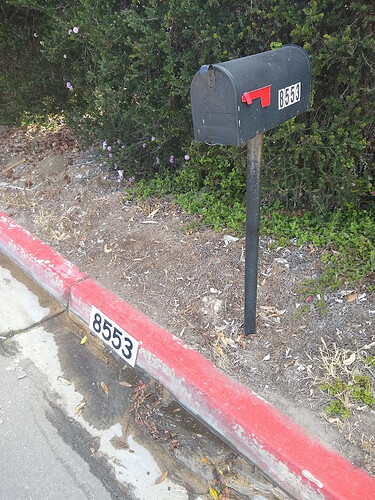I’ve done this a few times to make curb house numbers. I cut “holes” for the numbers out of white acrylic. Then I cut the numbers out of black acrylic—but as a mirror image. This is because the cross section of the laser cut is more of trapezoid (i.e., wider at the bottom than the top) than a rectangle.
If you want a tight fit you need to “grow” the letters by the needed “kerf” amount. That’s a bit complex in Inkscape. The subject has been covered here before. I use something like 0.1 mm as the kerf adjustment, but your mileage may vary, so a test would be required for your particular Glowforge and material.
In fact, I just made this* yesterday…
*Adding Comic Sans to the neighborhood’s curbs—one house at a time! ![]()
